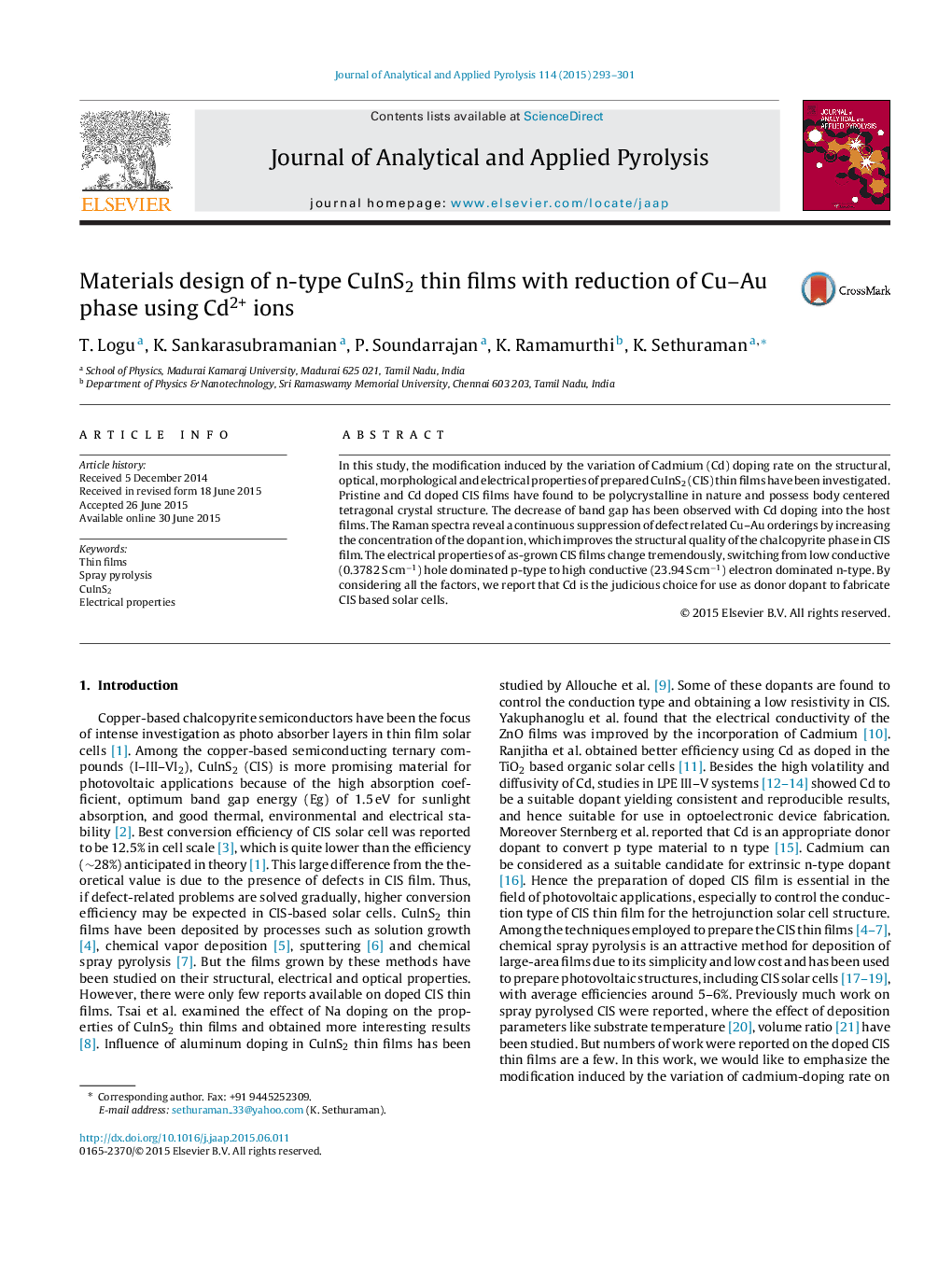| Article ID | Journal | Published Year | Pages | File Type |
|---|---|---|---|---|
| 1196990 | Journal of Analytical and Applied Pyrolysis | 2015 | 9 Pages |
•Doped CIS films have extended a red shift (48 nm for 8 wt% Cd) compared to undoped film.•The decrease of band gap has been observed with Cd doping into the host CIS thin films.•The photoluminescence quenching is more pronounced in the higher wt% of Cd dopant.•Switching from low conductive (0.3782 S cm−1) hole dominated p-type to high conductive (23.94 S cm−1)) electron dominated n-type.
In this study, the modification induced by the variation of Cadmium (Cd) doping rate on the structural, optical, morphological and electrical properties of prepared CuInS2 (CIS) thin films have been investigated. Pristine and Cd doped CIS films have found to be polycrystalline in nature and possess body centered tetragonal crystal structure. The decrease of band gap has been observed with Cd doping into the host films. The Raman spectra reveal a continuous suppression of defect related Cu–Au orderings by increasing the concentration of the dopant ion, which improves the structural quality of the chalcopyrite phase in CIS film. The electrical properties of as-grown CIS films change tremendously, switching from low conductive (0.3782 S cm−1) hole dominated p-type to high conductive (23.94 S cm−1) electron dominated n-type. By considering all the factors, we report that Cd is the judicious choice for use as donor dopant to fabricate CIS based solar cells.
